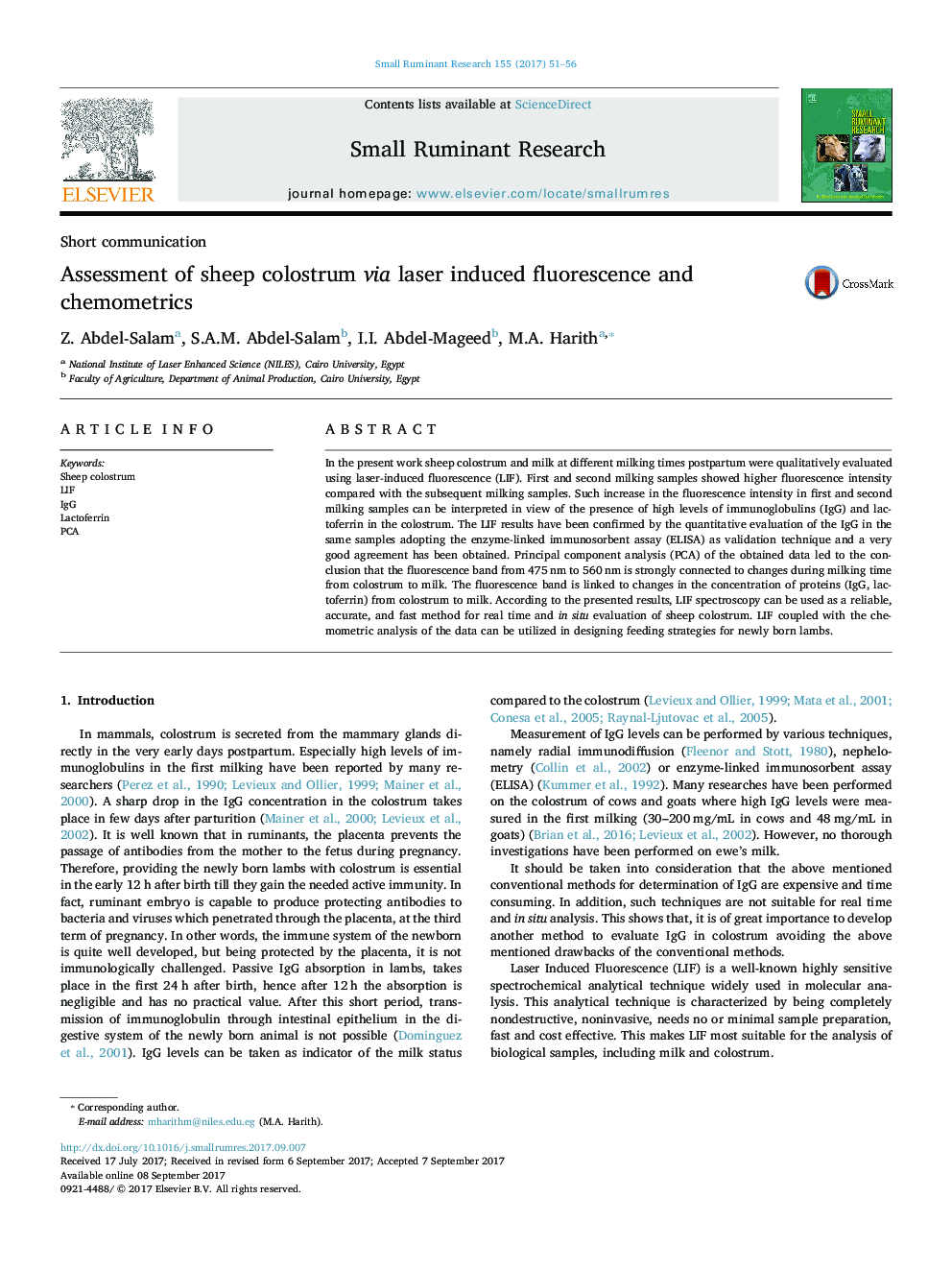| Article ID | Journal | Published Year | Pages | File Type |
|---|---|---|---|---|
| 5544127 | Small Ruminant Research | 2017 | 6 Pages |
Abstract
In the present work sheep colostrum and milk at different milking times postpartum were qualitatively evaluated using laser-induced fluorescence (LIF). First and second milking samples showed higher fluorescence intensity compared with the subsequent milking samples. Such increase in the fluorescence intensity in first and second milking samples can be interpreted in view of the presence of high levels of immunoglobulins (IgG) and lactoferrin in the colostrum. The LIF results have been confirmed by the quantitative evaluation of the IgG in the same samples adopting the enzyme-linked immunosorbent assay (ELISA) as validation technique and a very good agreement has been obtained. Principal component analysis (PCA) of the obtained data led to the conclusion that the fluorescence band from 475Â nm to 560Â nm is strongly connected to changes during milking time from colostrum to milk. The fluorescence band is linked to changes in the concentration of proteins (IgG, lactoferrin) from colostrum to milk. According to the presented results, LIF spectroscopy can be used as a reliable, accurate, and fast method for real time and in situ evaluation of sheep colostrum. LIF coupled with the chemometric analysis of the data can be utilized in designing feeding strategies for newly born lambs.
Keywords
Related Topics
Life Sciences
Agricultural and Biological Sciences
Animal Science and Zoology
Authors
Z. Abdel-Salam, S.A.M. Abdel-Salam, I.I. Abdel-Mageed, M.A. Harith,
